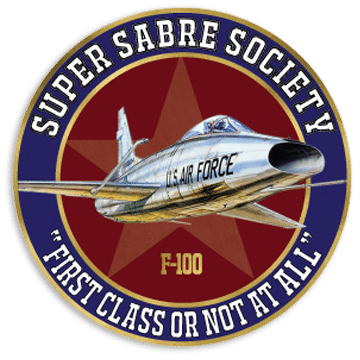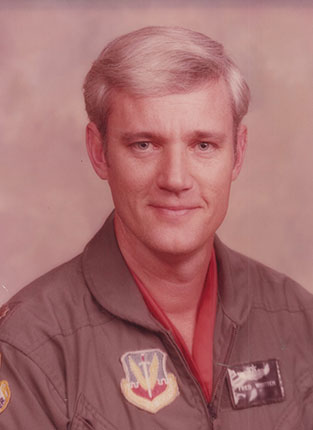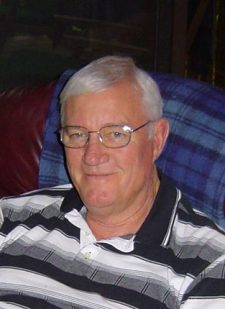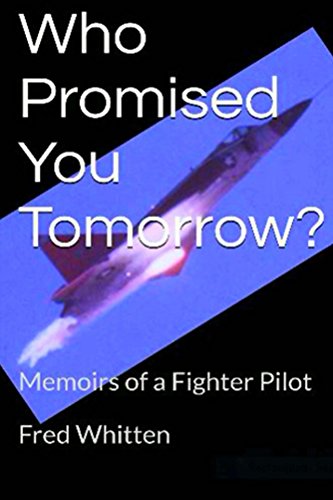I reported in to the Fightin’ Fifty-Fifth Tactical Fighter Squadron. I was the new guy with a little over three hundred total flying hours, almost all of which were spent in West Texas and Central Arizona. The flying weather in both of those locations is generally characterized by the acronym CAVU. That is “Clear and Visibility Unlimited.” In Jolly Old England the weather really sucks. It’s a country (really an island) that enjoys very little sunshine and is prone to some really foggy, foggy weather.
On my first flight (referred to as a local orientation), I’m launched in a single-seater F-100D model, and am briefed to “hang” on the wing of my Flight Leader. The weather was five hundred feet overcast and the visibility was less than two miles. Those numbers don’t mean a helluva lot to a non-aviator, but they were very significant to this young fighter pilot. After takeoff, a climb to twenty-thousand feet, and some minor aerobatics, we returned to the GCA (Ground Controlled Approach) pattern to get the jets back on the ground.
In airplane vernacular, a “penetration” is a letdown through weather and a landing approach to an airfield that has less than visual approach minimums. Capt. John Mays penetrated first and left me at twenty-thousand feet over the airfield and I’ll tell you that he really didn’t know what terror this young 1st lieutenant felt as he saw Capt Mays’ F-100 slide into the clouds on its way back home.
Unknown to me, the weather had deteriorated to 300 feet overcast and 1 ½ miles visibility in light fog. Now I had to perform a no-shit, GCA into bad weather that I wasn’t accustomed to, and not screw it up. I made three approaches to the primary runway at RAF Wethersfield and did not see the runway on any of the three. As luck would have it, when the weather is really dog shit, a pilot can depend on “Murphy’s Law.”
Now I”m sure you realize that “Murphy’s Law” had not yet been articulated in 1968, but we had a very common phrase that covered the gist of what was later to become “Murphy’s Law;” and that phrase was “snake bit.” I don’t know how widely the term “snake bit” was in the civilian community, but it was used extensively by military folks to explain why someone had really bad luck.
Well, on those first three GCA approaches, I was advised by the GCA Controller at the beginning of each approach, that they were doing controller training. So here’s this “FNG” (friggin’ new guy), flying in really crummy weather, being directed by a GCA “FNG” to a missed approach (a phrase that means you couldn’t find the runway).
After the third missed approach, I declared minimum fuel. This alerted the people on the ground that I had just enough fuel on board to complete another two approaches and then would be forced to eject due to fuel starvation. It was then that a new voice came on the radio and I instantly knew that I was in good hands.
This guy was clearly an English national and had probably been guiding airplanes back through GCAs since dirt was new. As he gave me directional guidance (as in turn right to a heading of 310 degrees) and elevation guidance (as in you’re 50 feet above glide slope) he also pointed out that there were about fifteen knots of left crosswind and, because of that fact, the runway at decision height (no shit, that’s what a go-around altitude is called) will be in the right-hand quarter panel of my viewing area. This was data that the previous controller-trainee had neglected to point out and, sure enough, as the altimeter showed 300 feet above the outside terrain, the runway was exactly where the old bloke said it would be.
Boy, talk about relieved! Shortly after my debriefing with Captain Mays, I realized that the runway lights had probably been in exactly that position relative to the airplane on all three GCAs, but that my inexperience with the really shitty weather had me looking straight out the front of the airplane and, therefore, I had not seen the landing strip. I called the GCA facility and asked to speak to the final controller of Sabre 52. I asked him what kind of whiskey he drank, and went to the class VI store (the package liquor store on base). I bought the largest jug of Chivas Regal that was available, got my humble ass over to the controller, and expressed in as clear terms as possible that I fully understood that this guy saved my pink ass. He was a Sergeant in the Royal Air Force!
Nice to join up with all you Hun drivers…..I now live in the beautiful Texas hill country and love every minute of it.
Read more stories from Fred in his book Who Promised You Tomorrow, (https://www.amazon.com/Who-Promised-You-Tomorrow-Memoirs/dp/1533396078)





